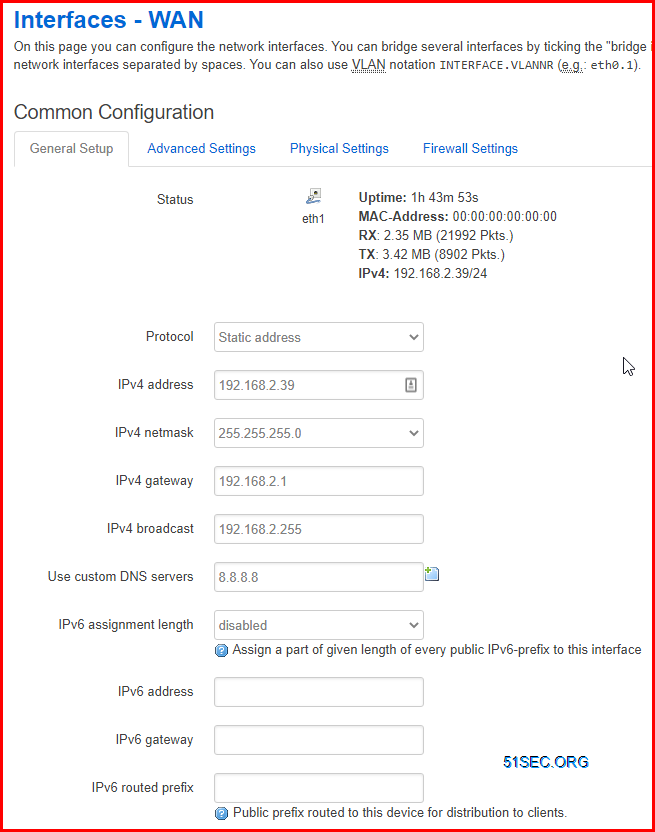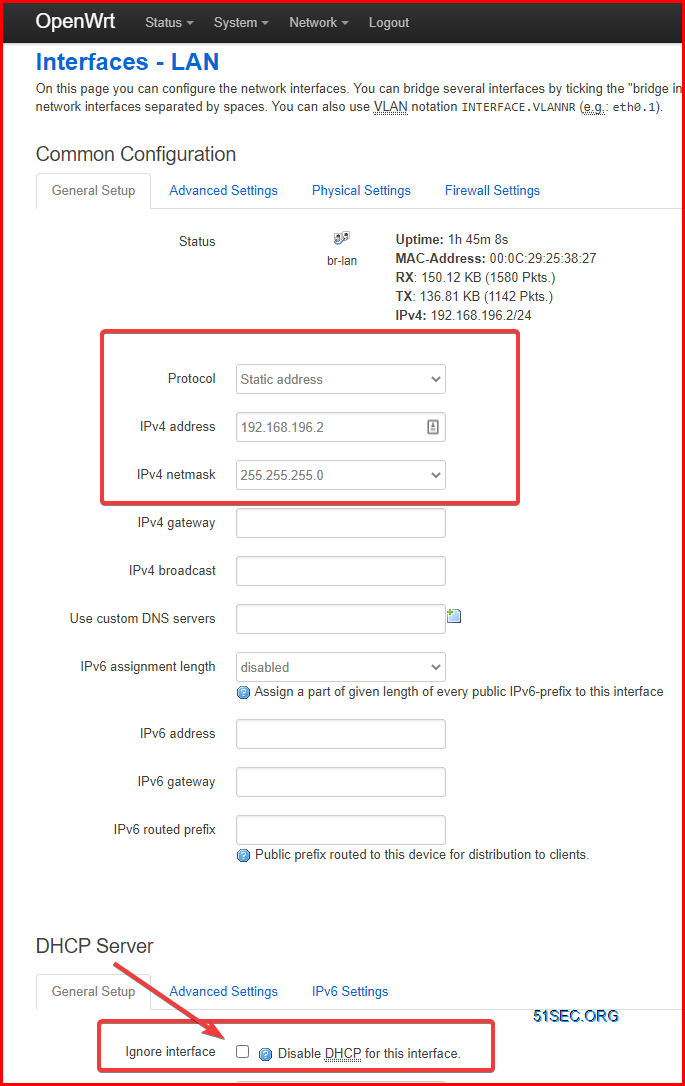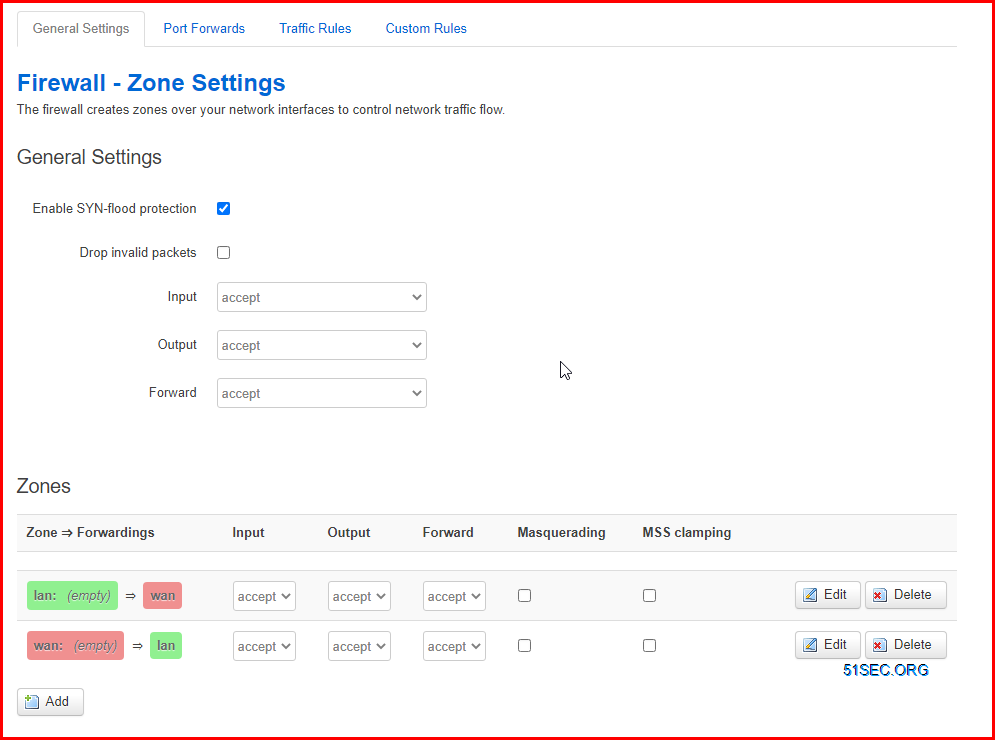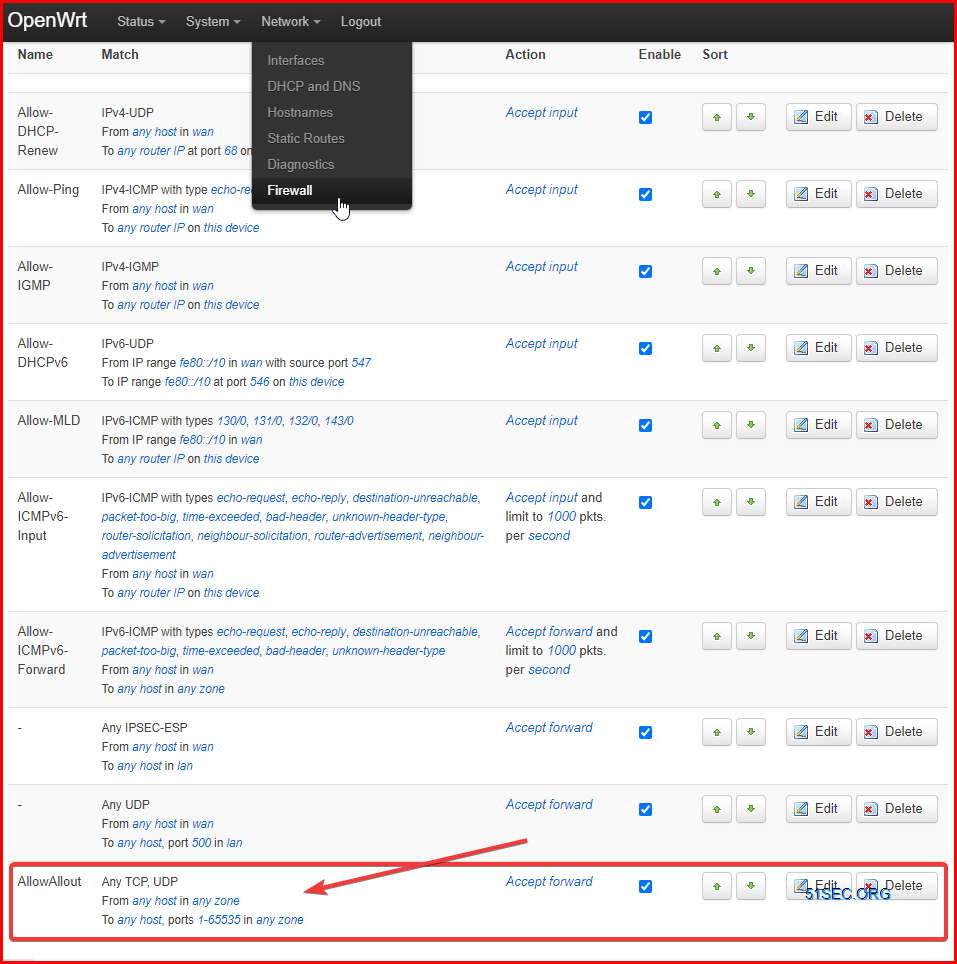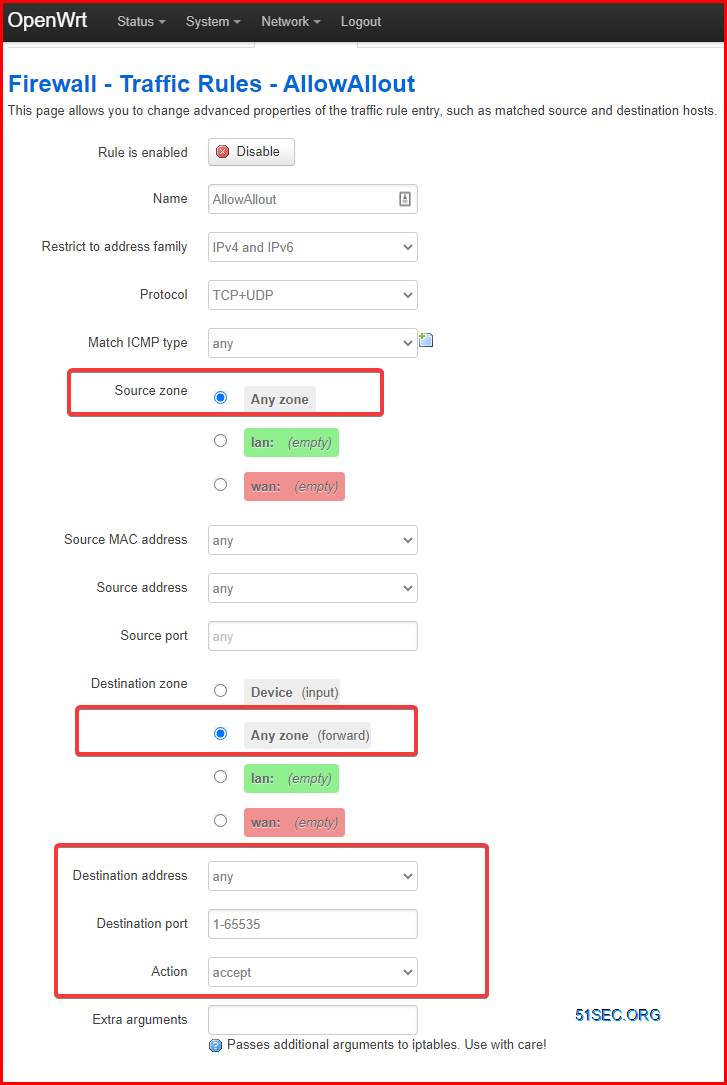The OpenWrt Project is a Linux operating system targeting embedded devices. Instead of trying to create a single, static firmware, OpenWrt provides a fully writable filesystem with package management. This frees you from the application selection and configuration provided by the vendor and allows you to customize the device through the use of packages to suit any application.
I had a old post regarding how to install OpenWRT into VMWare.
For me, OpenWRT is a perfect solution to run in my virtual environment. It can be ran as a light weight router to connect two different networks simulating two offices.
It also can act as an Firewall to filter the traffic crossing OpenWRT. It took a little resources fro your CPU, Memory and Hard Drive.
There are lots of situations when I created my lab, I will need only a small device acting as an router. All traffic has to be passed but two networks are having completely two different network addresses.
LAN interface has an ip : 192.168.196.2/24.
One firewall rule created to allow traffic from any host in any zone to any zone on ports range from 1 to 65535.
The firewall rule details show in the following screenshot:
References:
from Blogger http://blog.51sec.org/2021/01/configure-openwrt-allow-all-traffic.html

